.
12.11.2014 / 11.50 MEZ
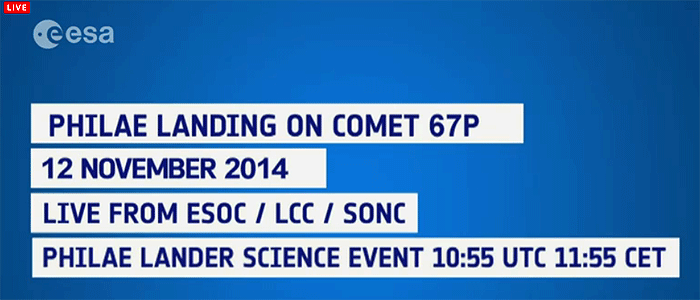

...
Warten auf Philea 12.10 MEZ
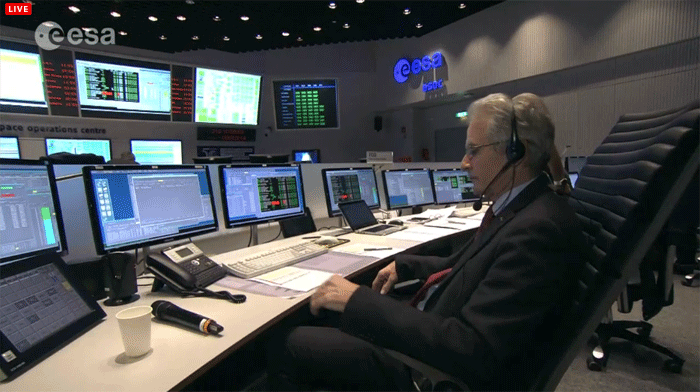
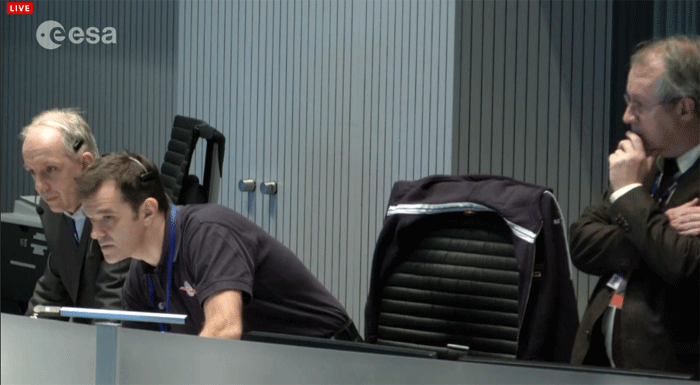
KONTAKT ZU PHILEA
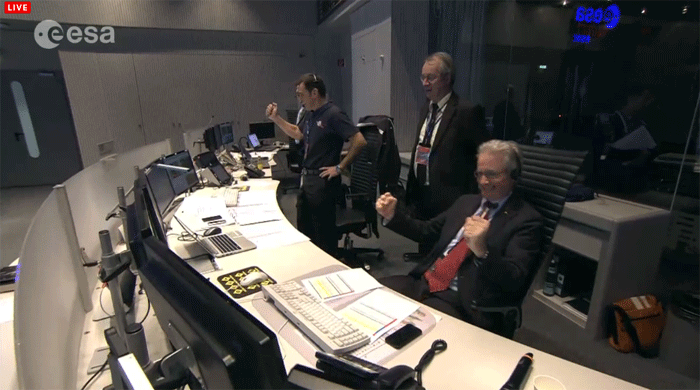
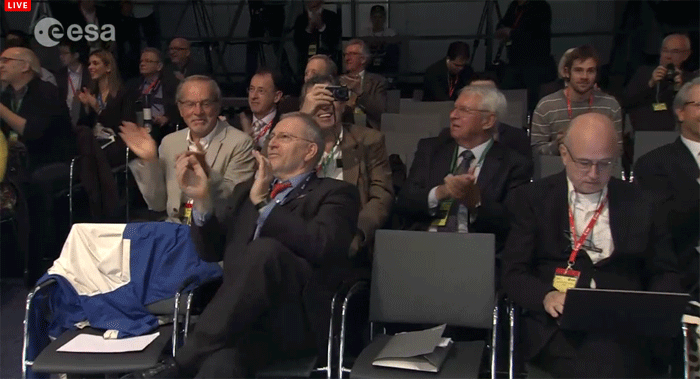
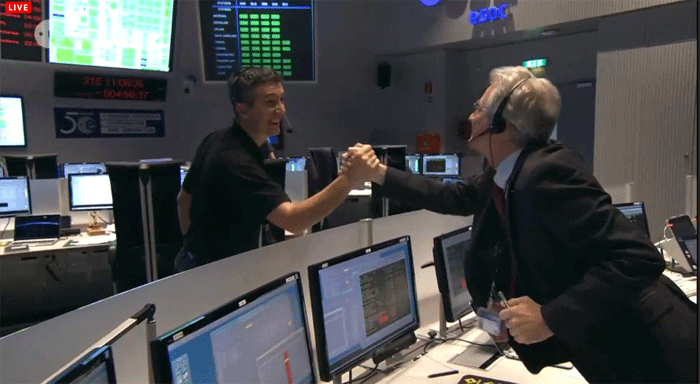
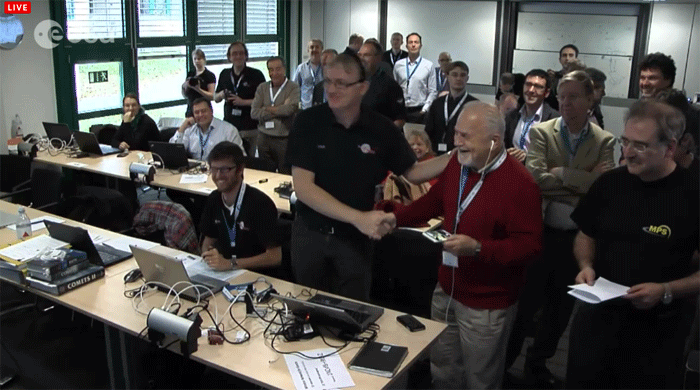
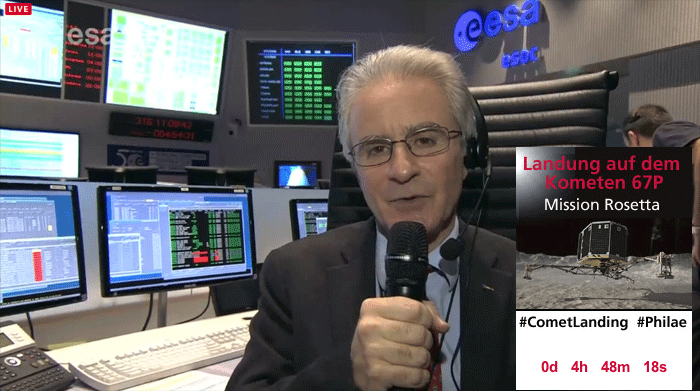
...
... 12.45 MEZ
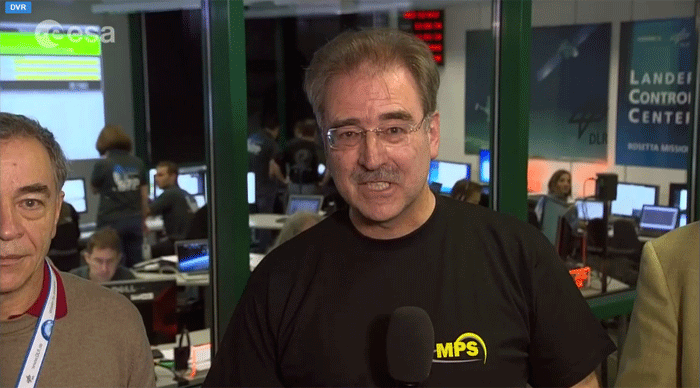
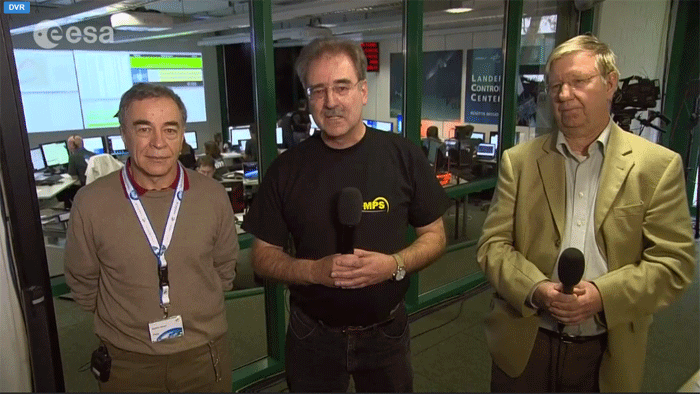
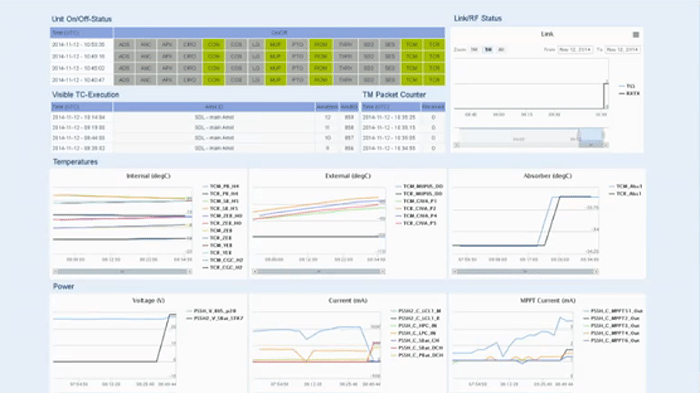
...
... 13.45 MEZ
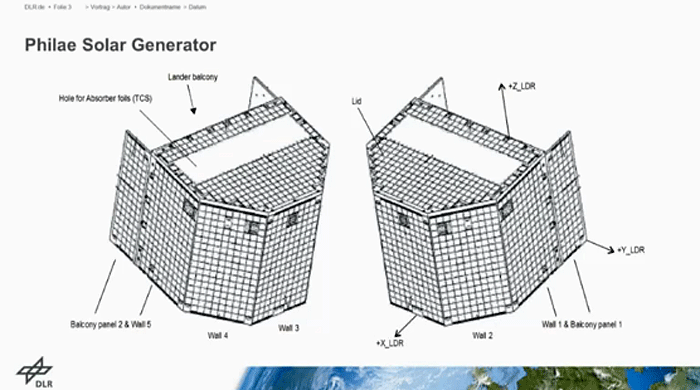
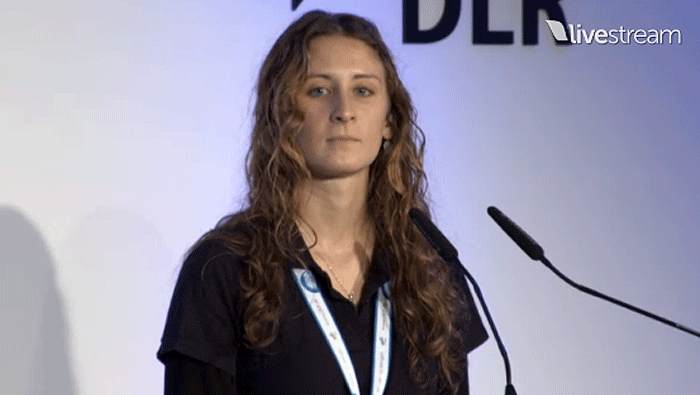
Quelle: DLR-livestream
.
Update: 13.11.2014
.
FAREWELL, ROSETTA!
Shortly after parting from Rosetta, the lander Philae took a shot of its mothership:
.
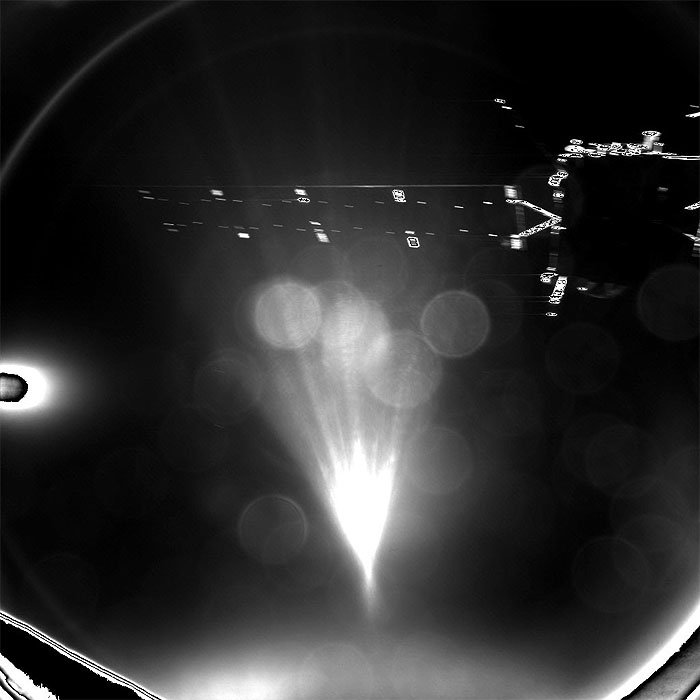
Philae’s parting image of Rosetta, taken shortly after separation. Credit: ESA/Rosetta/Philae/CIVA
The image was taken with the lander’s CIVA-P imaging system and captures one of Rosetta's 14 metre-long solar arrays. It was stored onboard the lander until the radio link was established with Rosetta around two hours after separation, and then relayed to Earth.
The lander separated from the orbiter at 09:03 GMT/10:03 CET and is expected to touch down on Comet 67P/Churyumov–Gerasimenko seven hours later. Confirmation of a successful touchdown is expected in a one-hour window centred on 16:02 GMT / 17:02 CET.
.
FAREWELL, PHILAE!
Just like Philae took a parting shot of the mothership shortly after separation, also Rosetta captured some amazing shots of the lander as it began its seven-hour descent to the surface of the comet.
These images were taken with Rosetta’s OSIRIS imaging system, both with the wide-angle camera and the narrow-angle camera.
.
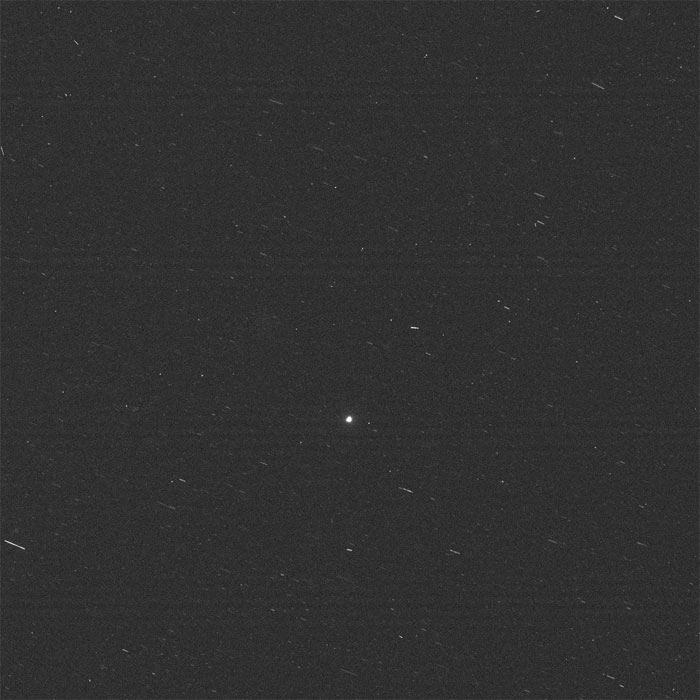
Rosetta’s OSIRIS wide-angle camera captured this parting shot of the Philae lander after separation. Credit: ESA/Rosetta/MPS for OSIRIS Team MPS/UPD/LAM/IAA/SSO/INTA/UPM/DASP/IDA
.
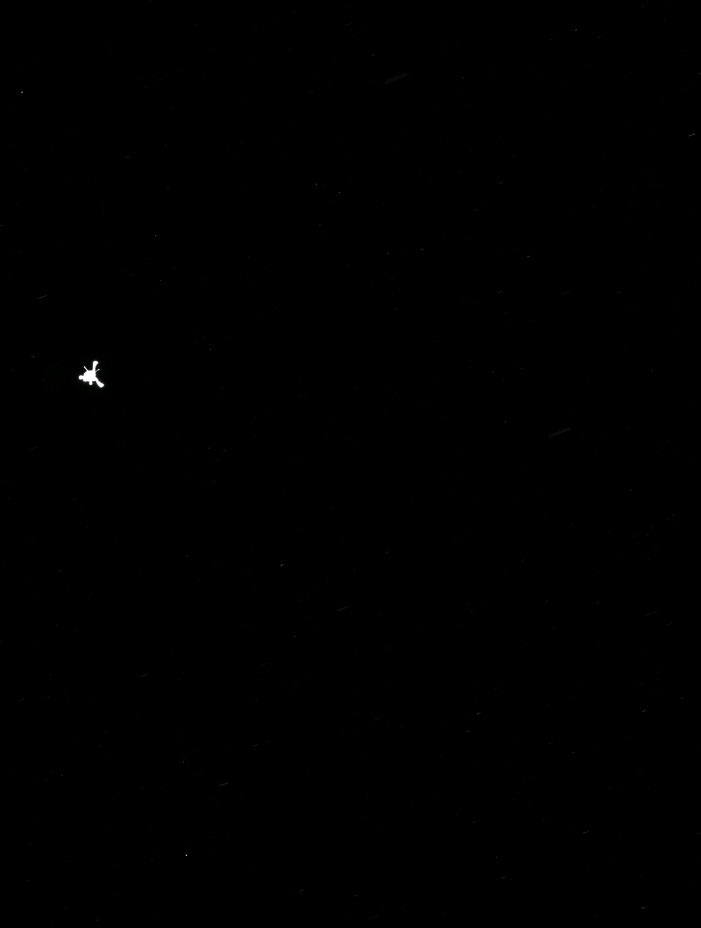
Rosetta’s OSIRIS narrow-angle camera captured this parting shot of the Philae lander after separation. Credit: ESA/Rosetta/MPS for OSIRIS Team MPS/UPD/LAM/IAA/SSO/INTA/UPM/DASP/IDA
.
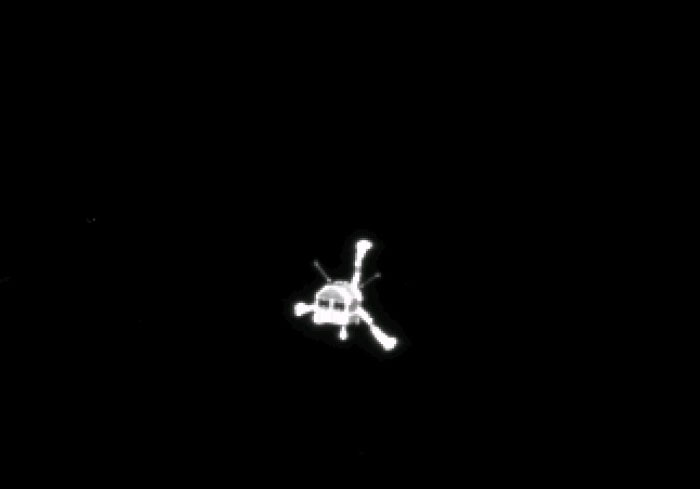
Rosetta’s OSIRIS narrow-angle camera captured this parting shot of the Philae lander after separation (cropped). Credit: ESA/Rosetta/MPS for OSIRIS Team MPS/UPD/LAM/IAA/SSO/INTA/UPM/DASP/IDA
.
The lander separated from the orbiter at 09:03 GMT/10:03 CET and is expected to touch down on Comet 67P/Churyumov–Gerasimenko seven hours later. Confirmation of a successful touchdown is expected in a one-hour window centred on 16:02 GMT / 17:02 CET.
.
TOUCHDOWN! ROSETTA’S PHILAE PROBE LANDS ON COMET
ESA’s Rosetta mission has soft-landed its Philae probe on a comet, the first time in history that such an extraordinary feat has been achieved.
After a tense wait during the seven-hour descent to the surface of Comet 67P/Churyumov–Gerasimenko, the signal confirming the successful touchdown arrived on Earth at 16:03 GMT (17:03 CET).
The confirmation was relayed via the Rosetta orbiter to Earth and picked up simultaneously by ESA’s ground station in Malargüe, Argentina and NASA’s station in Madrid, Spain. The signal was immediately confirmed at ESA’s Space Operations Centre, ESOC, in Darmstadt, and DLR’s Lander Control Centre in Cologne, both in Germany.
.
HERE COMES THE LANDER!
Shortly before Philae’s touchdown on Comet 67P/C-G, the lander’s down-looking descent camera, ROLIS, imaged the surface of the comet:
.
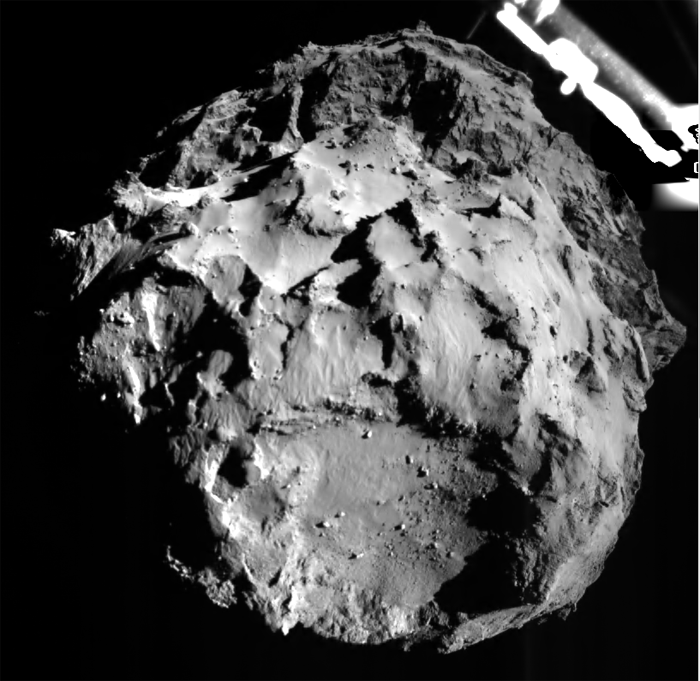
ROLIS descent image of Comet 67P/C-G. Credits: ESA/Rosetta/Philae/ROLIS/DLR
The image shows was acquired during descent on 12 November 2014 at 14:38:41 UT, from a distance of approximately 3 km from the surface. The landing site is imaged with a resolution of about 3m per pixel.
The ROLIS instrument is a down-looking imager that acquires images during the descent and doubles as a multispectral close-up camera after the landing. The aim of the ROLIS experiment is to study the texture and microstructure of the comet's surface.
In the upper right corner a segment of the Philae landing gear is visible.
***
ROLIS (ROsetta Lander Imaging System) is a descent and close-up camera on the Philae Lander. It has been developed by the DLR Institute of Planetary Research, Berlin.
.
Quelle: ESA
----
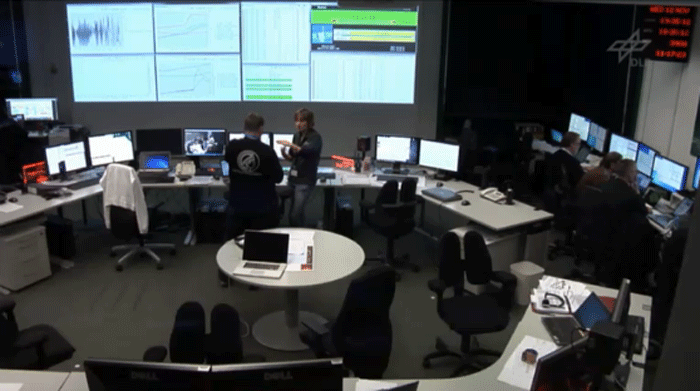
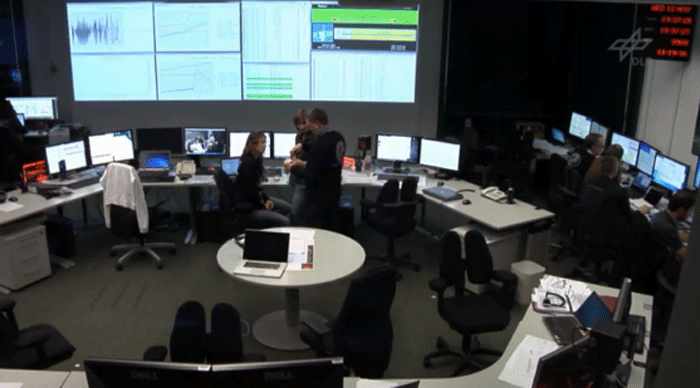
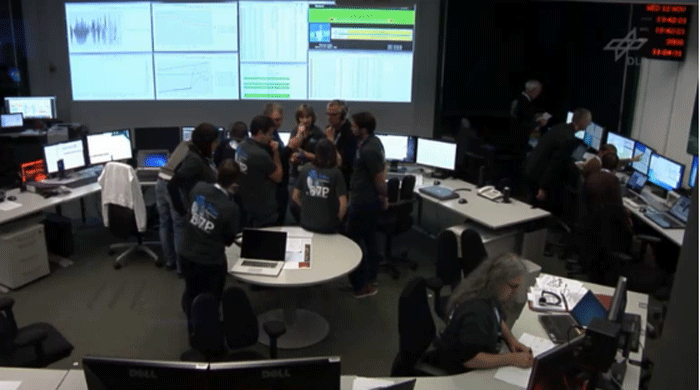
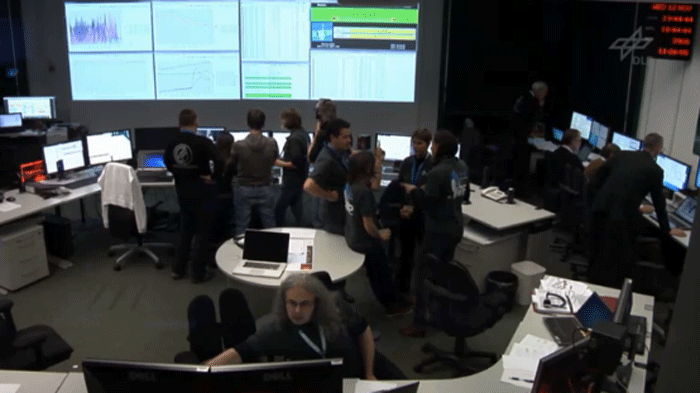
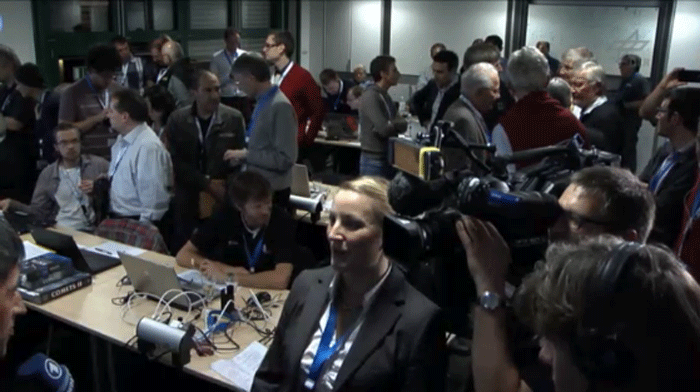
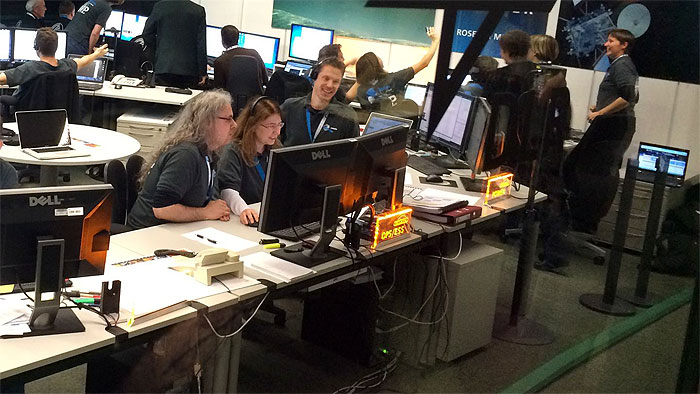
Der Lander Philae hat am 12. November 2014 auf der Kometenoberfläche Churyumov-Gerasimenko aufgesetzt. Damit steht erstmals ein vom Menschen geschaffenes Gerät auf einem Kometen und misst unmittelbar vor Ort Daten. "Philae spricht zu uns - wir sind auf der Kometenoberfläche", sagt Lander-Projektleiter Dr. Stephan Ulamec vom Deutschen Zentrum für Luft- und Raumfahrt (DLR). Um 17:09 Uhr jubelte das Team im Lander Control Center (LCC) des DLR, das den Lander steuert und betreibt.
"Mit der erfolgreichen Landung des in Deutschland entwickelten und gebauten Kometenlanders Philae hat eines der faszinierendsten Kapitel der Raumfahrtgeschichte, die Rosetta-Mission, seine Fortsetzung gefunden. Für diese technische Meisterleistung möchte ich mich bei allen Beteiligten und unseren Partnern bedanken, besonders beim Team des DLR Lander-Kontrollzentrums in Köln", betont Prof. Dr.-Ing. Johann-Dietrich Wörner, Vorstandsvorsitzender des DLR. "Wir sind alle gespannt auf die ersten Bilder direkt von der Oberfläche eines Kometen und auf die dann folgenden wissenschaftlichen Daten, die uns einen Einblick in die Geschichte nicht nur unseres Sonnensystems gestatten werden."
Seit dem 2. März 2004 ist Philae an Bord der Raumsonde Rosetta zum Kometen Churyumov-Gerasimenko gereist. Jetzt - 500 Millionen Kilometer entfernt von der Erde - setzte er auf der Kometenoberfläche auf. Dort sollen nun zehn Instrumenten in den nächsten Stunden reihum zum Einsatz kommen und der Vergangenheit unseres Sonnensystems auf die Spur kommen. Da Kometen wie ein kleiner Kühlschrank besonders ursprüngliches Material aus der Zeit der Entstehung des Sonnensystems konservieren, werden die gewonnenen Daten den Blick zurück in die Kinderstube des Sonnensystems ermöglichen.
Philae - ein "High-Tech-Würfel" untersucht den Kometen 67P
Noch in der vergangenen Nacht hatte Philae das Team im Lander Control Center in Atem gehalten: Die Kaltgasdüse an der oberen Seite des Landers, die ihn bei der Landung auf den Kometen drücken sollte, reagierte nicht wie erwartet. Da Philae jedoch über zwei Harpunen verfügt, die sofort nach Bodenkontakt ausgelöst werden und den Lander im Kometen verankern, hatte dies keine Auswirkung - pünktlich um 10.03 Uhr mitteleuropäischer Zeit kam am Boden die Nachricht an, dass Philae von der Rosetta-Sonde abgekoppelt hatte. Während des siebenstündigen Absinkens entfaltete sich das Landegestell und mehrere Instrumente nahmen ihre Arbeit auf.
Die Hauptaufgabe ist die Vor-Ort-Analyse des Kometenmaterials, des wohl ursprünglichsten und ältesten Materials, das es in unserem Sonnensystem gibt. Insbesondere sollen Element- und Isotopenverteilung, organische Moleküle sowie Minerale und Eise untersucht werden. Bei der Analyse der Struktur und Eigenschaften des Kometenkerns geht es vor allem um die Oberflächenbeschaffenheit, die physikalischen Eigenschaften des Kometenkerns sowie die Schichtungsstruktur und die globale interne Struktur. Zudem sollen die Auswirkungen zeitlicher Variationen beobachtet und untersucht werden, die durch den Tag- und Nachtzyklus sowie die Schweifbildung bei der Annäherung an die Sonne entstehen.
Die Landeeinheit Philae wurde von einem internationalen Konsortium unter Leitung des Deutschen Zentrums für Luft- und Raumfahrt (DLR), MPS, CNES und ASI entwickelt und gebaut. Das DLR stellt auf der Landeeinheit Philae drei der insgesamt zehn Experimente: Die ROLIS-Kamera zur Beobachtung der Kometenoberfläche während der Landephase, das SESAME-Experiment zur seismischen Untersuchung des Kometenkerns und das Gerät MUPUS, mit dem thermische Eigenschaften und die Festigkeit des Kometen gemessen werden.
Quelle: DLR
.
NASA Statement on Successful Rosetta Comet Landing
The following statement is from John Grunsfeld, astronaut and associate administrator for NASA’s Science Mission Directorate in Washington, about the successful comet landing by the European Space Agency’s Rosetta spacecraft:
“We congratulate ESA on their successful landing on a comet today. This achievement represents a breakthrough moment in the exploration of our solar system and a milestone for international cooperation. We are proud to be a part of this historic day and look forward to receiving valuable data from the three NASA instruments on board Rosetta that will map the comet’s nucleus and examine it for signs of water.
“The data collected by Rosetta will provide the scientific community, and the world, with a treasure-trove of data. Small bodies in our solar system like comets and asteroids help us understand how the solar system formed and provide opportunities to advance exploration. We look forward to building on Rosetta's success exploring our solar system through our studies of near earth asteroids and NASA's upcoming asteroid sample return mission OSIRIS-REx. It’s a great day for space exploration."
Quelle: NASA
.
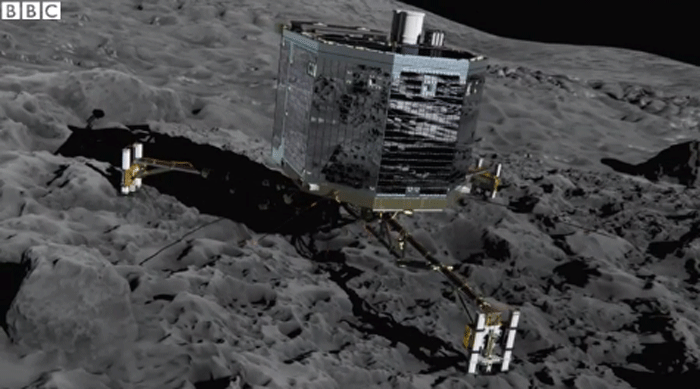
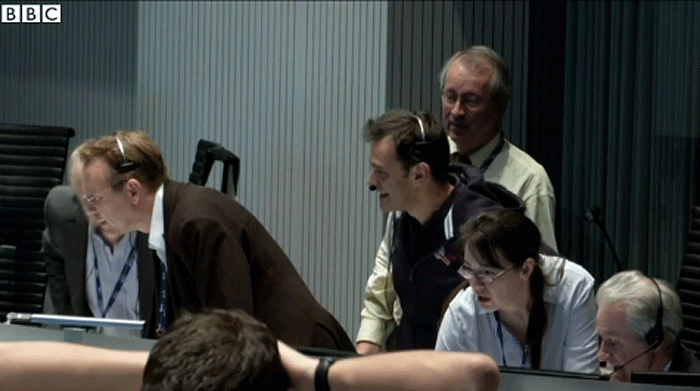
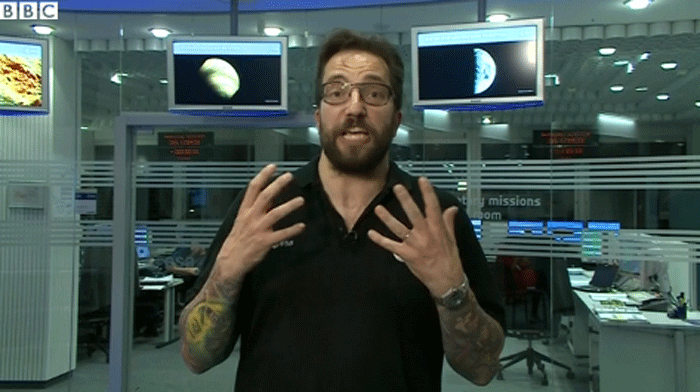
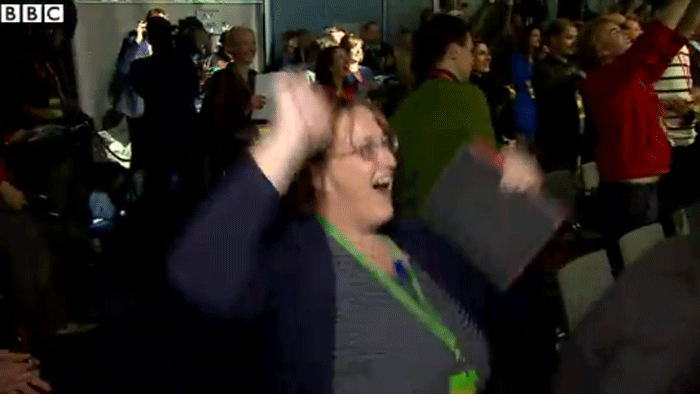
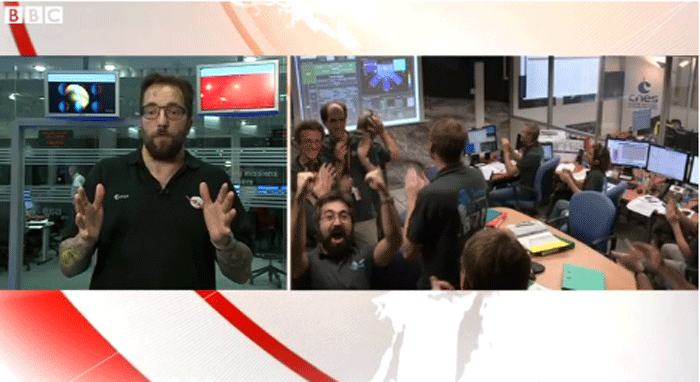
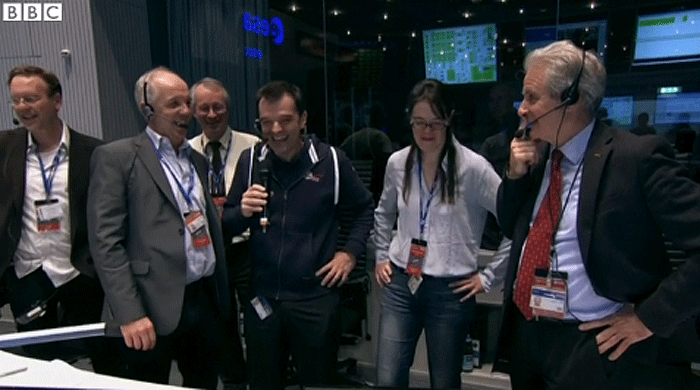
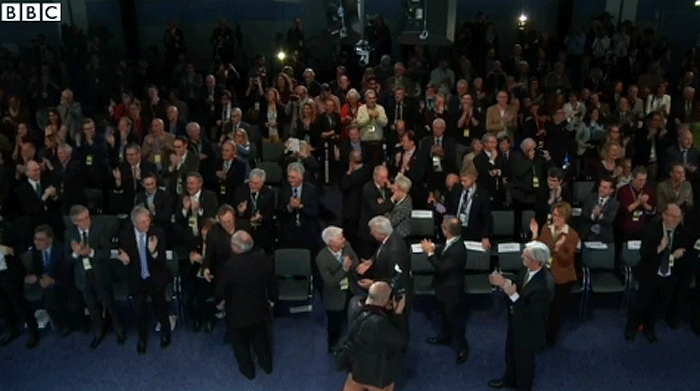
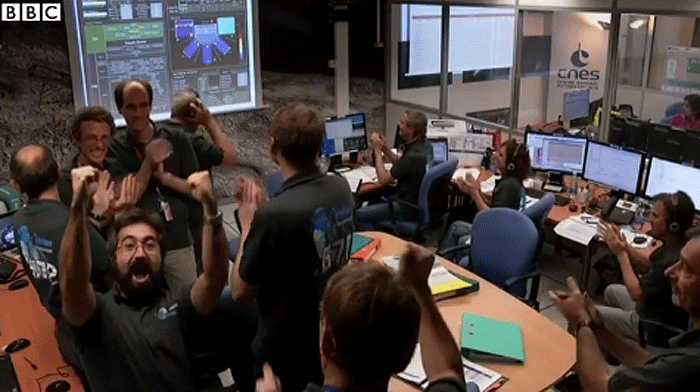
Rosetta: Comet probe Philae now stable - scientists
The robot probe Philae that made a historic comet landing is now stable after initially failing to attach to the surface, the BBC has learnt.
Pictures are coming back from the craft and there is a stable radio link.
European Space Agency engineers working on the lander say it may have bounced hundreds of metres back up off the surface after first touching down.
Scientists hope the probe will analyse the comet's surface to yield insights into the origins of our Solar System.
The Esa's Rosetta satellite carried Philae on a 6.4 billion-km (4bn-mile) journey to Comet 67P/Churyumov-Gerasimenko.
The robot probe, the size of a washing machine, was launched from the satellite on Wednesday and spent seven hours travelling to the comet.
News of the first landing was confirmed at about 16:05 GMT on Wednesday.
Ebullient mood
Controllers have now re-established radio communication with the probe and are retrieving pictures from it.
These show the feet of the lander and the wider cometscape.
There is still concern about the longer-term stability of Philae because it is not properly anchored - the harpoons that should have hooked it into the surface did not fire on contact.
Quelle: BBC
4985 Views
